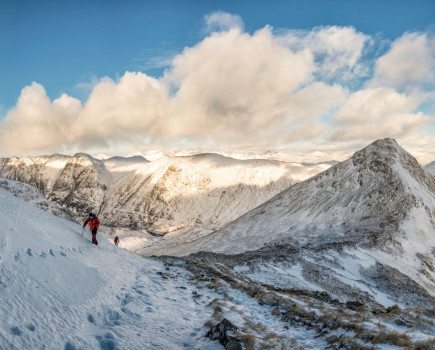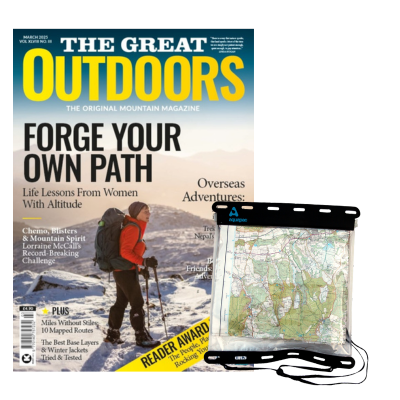Tackling climate change is a task for all humanity, but there are still ways we can move the needle through more sustainable adventure as individuals, says Alex Roddie.
As I write this, the first six months of 2024 have each set new temperature records. We’ve all seen the impact on British mountains: extreme storms and flooding, wildfires, reduced snow cover, and species such as ptarmigan struggling to adapt. Abroad, glaciers are melting at an astounding rate. It can be tempting to declare defeat and assume that individual action is pointless. But, much as we must continue to pressure governments and businesses to clean up their acts – and to demand changes across society – there’s value in taking positive action towards individual sustainable adventure and in making steps towards a survivable future.
Main image: A lightweight solar panel can save energy while trekking in a sunny country | Credit: Alex Roddie
So what can we, the outdoor- and nature-loving community, do?
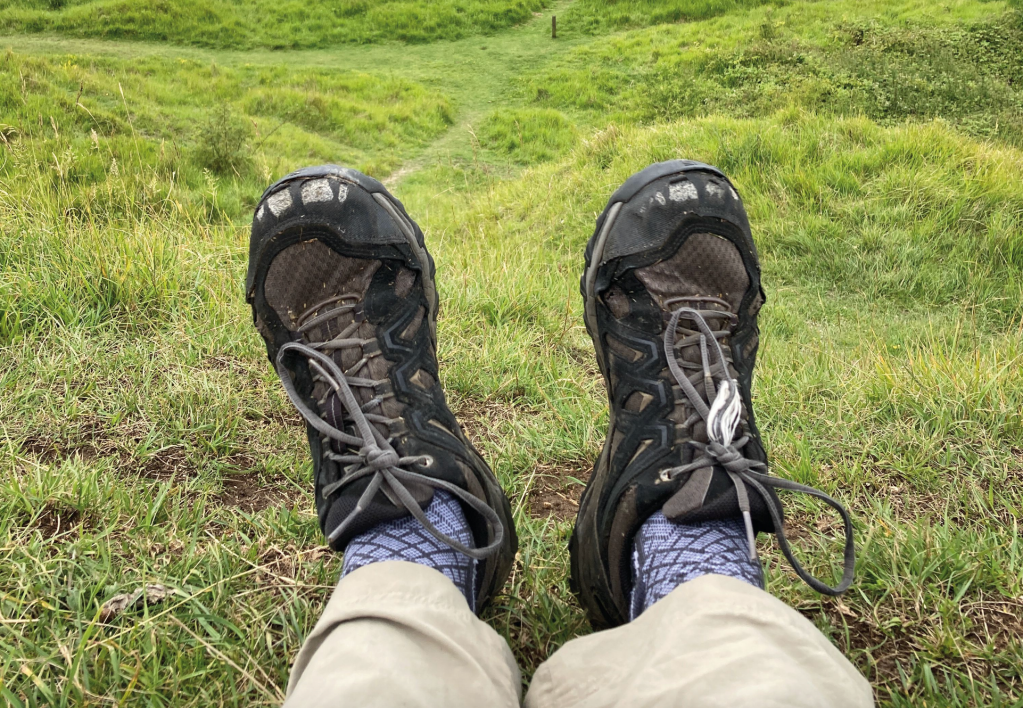
Well-worn walking shoes. Credit: Alex Roddie
Intentional kit choices
Every product has a footprint: in carbon, water, energy, and raw materials. It’s also important to consider its lifespan, ease of repair, and whether or not it can be recycled. The holy grail? A sustainably produced product that will last for many years, can be repaired, and is fully recyclable. This is why durability and functionality are just as important. If you buy a product that doesn’t perform well, and have to soon replace it, that’s still bad for the environment.
Can you buy or barter second-hand? This is a great way to save money while also reducing impact. Facebook groups such as Outdoor Gear Exchange UK are perfect for this.
Many brands offer detailed sustainability information. Some break it down into a digestible format, such as Rab’s excellent Material Facts. Do your research before buying a new item, and if in doubt contact the brand to ask. If they don’t know, it might encourage them to provide better information.
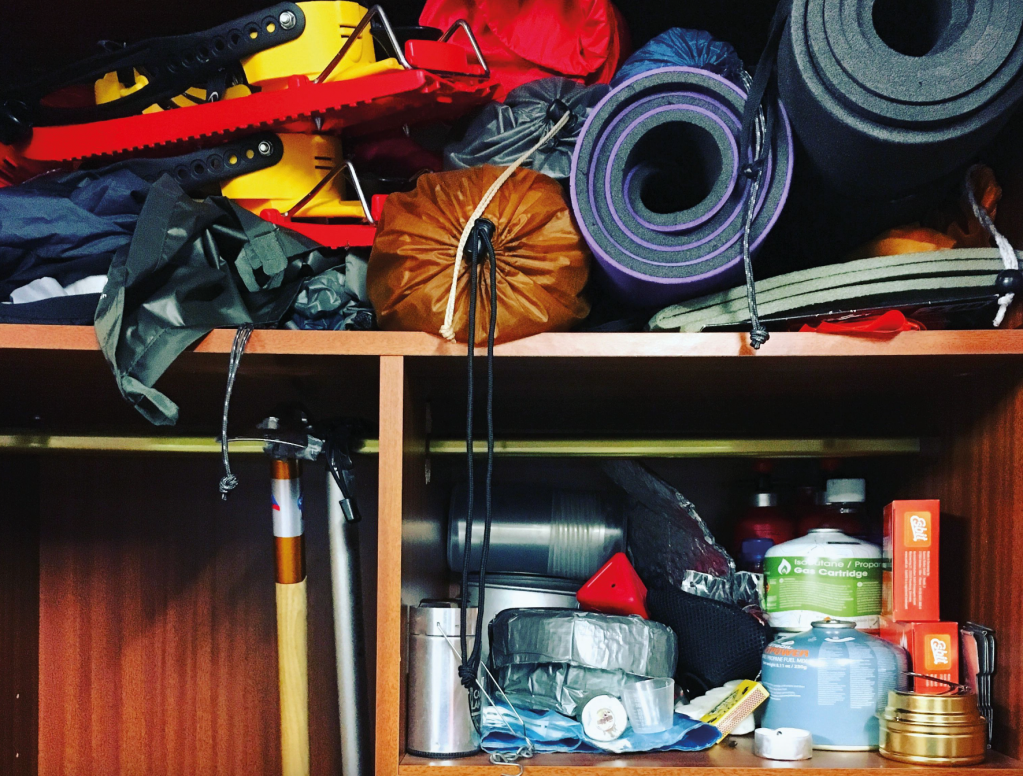
Take an honest look at your gear stash. Do you need that new item, or is it a want? Credit: Alex Roddie
Beware greenwashing. Brands can be vague on specifics – or even misrepresent what they’re doing. For example, some brands use carbon offsetting rather than reducing their footprint (this doesn’t actually reduce emissions). Consult Ethical Consumer magazine for detailed information on which brands are making effective changes.
It’s better to keep using kit you already own rather than buying new. Resist the siren call of new fashions – and get handy with needle and thread or Gore-Tex patches. Brands such as Páramo design their products for long-term use and repair. Aftercare products such as Nikwax and Grangers aid clothing longevity too.
Sometimes more extensive repairs are needed. Many brands now offer in-house repairs for their products. If the brand won’t repair it, approach a company such as Scottish Mountain Gear. Some footwear can be resoled (check out Cheshire Shoe Repairs).
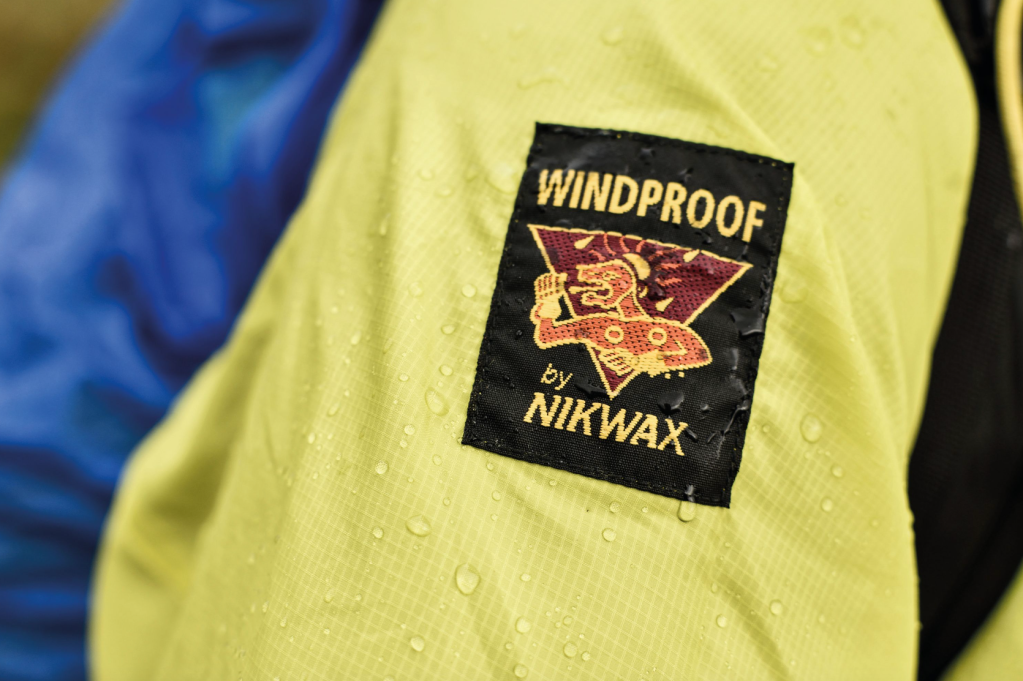
Technologies such as Páramo fabrics and Nikwax are designed with long-term use and materials sustainability in mind. Credit: Alex Roddie
Getting there
Can you travel by bus or train? It’s often significantly better for the environment. Pro tip: trace the black lines of railways on OS maps, then look for mountains near stations. The Eastern Lakes are highly accessible by rail, and I’ve enjoyed many trips to Glen Coe and Fort William by bus.
What kind of adventure can you create from your front door? Have you taken a look at your local OS map? Even if you live in a city, it’s likely you’re within walking or cycling distance of green space. Get creative in threading those green dashed lines together.
Car-sharing and hitching are also worth considering. While hitching is much harder post-Covid, it’s still worth a try. Always remain safe. Anecdotally, you might find it easier as a mixed-gender pair.
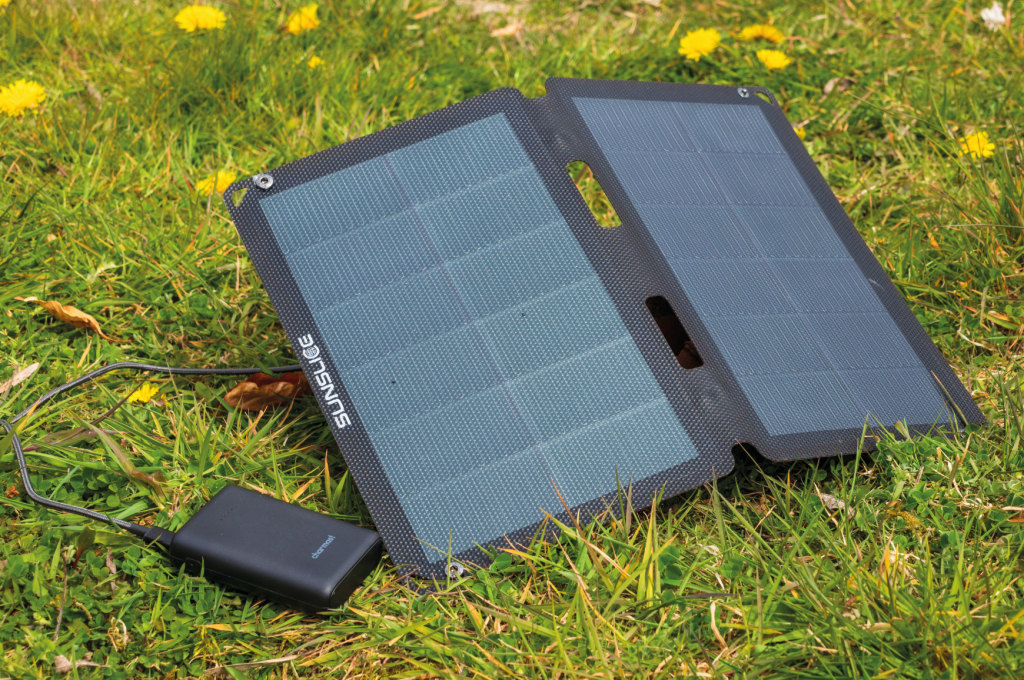
A lightweight solar panel can save energy. Credit: Alex Roddie
Food and water
Many backpacking meal brands now provide detailed information on ingredients, and some make sustainability a priority. However, this can be expensive. Home-dehydrating your own backpacking meals is fun, can be much cheaper, and gives you full control over sustainable choices.
Long-distance backpacking can involve a lot of single-use plastic. Minimise this by choosing brands that give the option of recyclable packaging, such as Firepot, or package food yourself at home. Use reusable containers instead of Ziploc bags. And, although this shouldn’t need saying, do pack out everything you bring with you.
An alcohol stove is a more sustainable choice than gas. Most gas cartridges can’t be recycled unless you puncture them after use, and the fuel itself is a fossil fuel.
Don’t buy bottled water on your long-distance hikes! Use a filter to treat water on the hill, and look for refill stations in towns (find them with the Refill app).

Some food brands now offer plastic-free packaging, such as these unusual beeswax-packaged flapjacks from One Good Thing. Credit: Alex Roddie
Giving back
Get involved with volunteering in your local hills. Whether it’s litter picking, path-repair work, or wildlife conservation, there are many ways you can help.
Even if you can’t get out there and wield a shovel, consider donating to charities such as Fix the Fells. Organisations such the BMC and Mountaineering Scotland also frequently run environmental campaigns. Last but not least, be active in campaigning for climate justice worldwide: support progressive parties, write to your MP, engage in direct action if you can, and vote with your wallet.
Read more: How to make your outdoor gear last for more than 40 years






